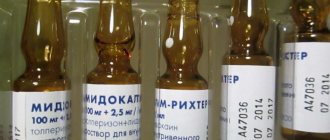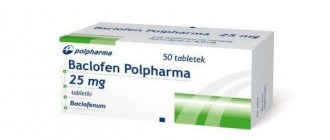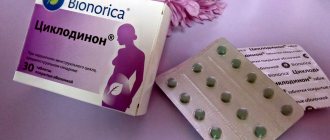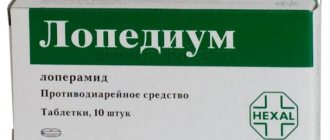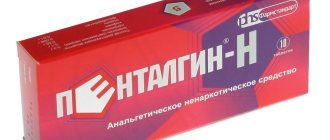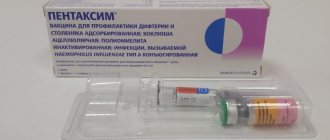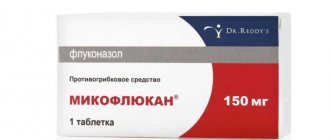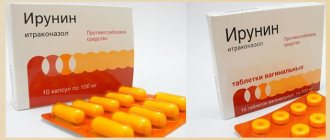139499
Author of the article
Evgeniy Nikolaevich Konoplev
Reading time: 6 minutes
AA
Meloxicam injections are a non-steroidal anti-inflammatory drug that must be administered intramuscularly. Quite effectively relieves pain and has an antirheumatic effect. It is used in combination with the treatment of various diseases of the musculoskeletal system, which are accompanied by severe pain and inflammatory processes. To use the drug correctly, you need to know what meloxicam injections help with.
Release form and composition
Produced in several different forms. The instructions for using the drug Meloxicam in injections indicate that the drug must be administered intramuscularly. This medicine may have the prefix “ds” or “teva” in its name. The solution is transparent and has a yellow-green tint. The liquid should not contain any impurities or suspended particles. The main active ingredient is meloxicam. Contains 10 mg per 1 ml of the drug. It also contains additional and auxiliary components:
- glycine;
- sodium chloride;
- poloxamer;
- water for injections;
- meglumine;
- sodium hydroxide;
- glycofurol
Meloxicam for intramuscular administration is sold in ampoules of 1.5 ml. Each dose contains 15 mg of the main active ingredient. Packaged in special ribbed packages of 10, 5 or 3 pieces. The pack contains one package and instructions for using Meloxicam DS injections.
How many days can you inject Meloxicam?
If long-term intramuscular use of Meloxicam is required, then in order to reduce the risk of side effects, the smallest dose is prescribed throughout the entire period of parenteral treatment. How many Meloxicam injections (days) can be injected is decided only by a traumatologist or surgeon. Most often, the course of injections does not exceed 3 days.
If complex treatment is used, the volume of the administered solution should not exceed 15 mg per day.
If it is necessary to continue using Meloxicam, a tablet form of the drug is prescribed.
Pharmacological properties
The main active ingredient of the drug intended for intramuscular administration is meloxicam. This substance belongs to the group of NSAIDs (non-steroidal anti-inflammatory drugs). It slows down the production of the COX enzyme, which is responsible for the conversion of acids during the development of various inflammations. Side components after the conversion of arachidonic acid lead to a local or general increase in temperature, swelling, and severe pain. Meloxicam can have an antipyretic effect, as well as reduce pain and inflammation.
After administration, the drug begins to accumulate through the blood plasma in various tissues of the body. The highest concentration is achieved in the musculoskeletal system. Meloxicam is processed by the liver and then excreted from the body in the urine.
What does it help with and what is it prescribed for?
The drug Meloxicam for injection is used as a means for symptomatic treatment; it has analgesic, antipyretic and anti-inflammatory effects.
The following indications for its use in injections are distinguished:
- ankylosing spondylitis;
- arthritis;
- arthrosis;
- Bekhterev's disease;
- osteoarthritis;
- osteochondrosis;
- periarthritis;
- polyarthritis;
- rheumatism.
Meloxicam treats these pathologies by reducing the intensity of pain and reducing swelling. The drug allows you to slow down the inflammatory process, reduce local tissue temperature, and reduce the rate of development of dystrophic changes in the musculoskeletal system.
Injections for back pain improve the patient’s well-being with radiculitis, reduce swelling of connective tissue structures, and improve nerve conduction in the spine.
Injections are especially effective at the beginning of the development of the disease and during the recovery period after injuries and operations. They are also used for exacerbation of chronic joint pathology or for treating the back.
Indications for use
This drug is used to suppress inflammatory processes. Most often it is used during therapeutic measures for diseases of the skeletal system. The medicine is prescribed for the following pathologies:
- Osteoarthritis. This is a disease of a degenerative-dystrophic nature. The pathology causes inflammation of the cartilage and periarticular tissues.
- Rheumatoid arthritis. This is an autoimmune joint disease. The human immune system produces antibodies that attack the patient's joints.
- Ankylosing spondylitis. It is also an autoimmune process. Spinal joints and joints are affected. The person feels very severe pain.
- Various symptoms that are localized in the musculoskeletal system and are inflammatory in nature.
This drug is not able to treat the disease. It has no influence on the course of the pathological process. With the help of Meloxicam, inflammation and pain levels are reduced.
Most often, the solution is used once every 24 hours. You can inject 2 times, but you need to take into account that the daily dose should not exceed 15 mg. The medicine is used for 2-3 days. After injections, it is recommended to switch to the tablet form of the drug.
Instructions for use
With prolonged use and high doses, the selectivity of meloxicam is reduced. Therefore, it should be used in a minimum dosage for the shortest possible course.
Directions for use and doses
Meloxicam solution is used as intramuscular injections. Injecting it into a vein is contraindicated. In pediatric practice, parenteral administration of the drug is not used.
Adults are prescribed 7.5 or 15 mg of meloxicam (0.5-1 ampoule) once a day. It is allowed to administer half an ampoule twice a day with an interval of several hours.
For arthrosis and osteochondrosis, treatment should begin with 7.5 mg (0.5 ampoule). If the result is unsatisfactory, the dosage is increased to 1 ampoule per day. For spondylitis and rheumatoid manifestations, it is recommended to administer 15 mg of meloxicam once a day. If possible, the dose is reduced by half (subject to its effectiveness). In case of parallel administration of the drug in tablets, the total daily dose should not exceed 15 mg.
It is not advisable for representatives of the older age group to administer more than 0.5 ampoules of solution per day. With moderate liver failure and creatinine levels above 30 ml/min, no dose adjustment is required.
Injection technique
Immediately before performing the procedure, the ampoule is aseptic and the medicine is drawn into the syringe. The solution for intramuscular administration is ready for use; it does not need to be diluted.
Further actions:
- The injection site is the upper outer quadrant of the gluteus maximus muscle. It is treated with an alcohol-soaked cloth or cotton pad. If you have a hip implant or repeated injection, you need to inject into the other buttock.
- The syringe is raised with the needle up and all the air is released. A drop of solution should appear at the end of the needle.
- The skin at the injection site is slightly stretched. With the other hand, with a quick movement, insert the needle at a right angle deep into the muscle.
- Before injecting the drug, you should make sure that the tip does not penetrate the lumen of the vessel. To do this, pull the piston slightly upward. If blood flows into the syringe, you need to pull the needle slightly towards yourself.
- The medicine is administered slowly, pressing the piston with even force.
- The needle is sharply removed from the muscle, the injection site is covered with an alcohol wipe and lightly massaged in a circular motion.
If severe pain occurs during injection, the injection must be stopped immediately.
A course of treatment
The duration of use of Meloxicam injections is determined by the doctor. The medication provides symptomatic relief, so there is no need for its course use. It is advisable to limit yourself to 1 injection. Subsequently, the patient is transferred to the tablet or rectal form of the drug.
The course of treatment can be extended to 2-3 days. Continued use of the solution for intramuscular injection increases the risk of developing severe adverse symptoms. Therefore, long-term injection therapy is permissible only when absolutely necessary, for example, in case of severe pain if it is impossible to use tablets and rectal suppositories.
Possible adverse reactions
The drug is relatively safe and well tolerated by most patients. Possible side effects:
- nausea, vomiting;
- bowel dysfunction (diarrhea or constipation), melena;
- flatulence, abdominal pain, dyspepsia;
- esophagitis, gastritis;
- stomatitis, peptic ulcers, ulcerative colitis, exacerbation of Crohn's disease;
- bleeding in the digestive tract;
- increased activity of liver enzymes and bilirubin levels;
- changes in the quantitative composition of the blood, including anemia;
- weakness, drowsiness, dizziness, migraine;
- visual and hearing impairment, conjunctivitis;
- heart failure, stroke, heart attack;
- arterial hypertension, hot flashes;
- cough, respiratory infections, bronchial asthma attack (due to allergy to NSAIDs);
- urinary disturbances, peripheral edema;
- urinary duct infections, nephritis (interstitial, glomerular), acute renal failure;
- hyperkalemia, increased levels of urea and creatinine;
- joint pain, dorsalgia;
- heat;
- body rashes, itching, urticaria, erythema, photodermatitis, toxic-allergic manifestations, tissue necrosis;
- Quincke's edema, bronchospasm, anaphylaxis;
- compaction, pain at the injection site.
The likelihood of ulcerogenesis, perforation of the upper gastrointestinal tract, and cardiac pathologies is low. Provided the recommended dosages are followed, undesirable effects from the digestive system occur much less frequently than with other NSAIDs.
The risk of side effects is increased:
- in elderly patients;
- when using large dosages and/or a prolonged course;
- in combination with certain medications.
If gastroduodenal ulcers, bleeding in the gastrointestinal tract, or allergic reactions occur, taking all forms of the drug must be stopped.
Overdose
If the recommended doses are exceeded, the side symptoms characteristic of the drug intensify. The most common symptoms are nausea, vomiting, drowsiness, and abdominal pain. Gastrointestinal bleeding is possible.
A severe overdose can cause:
- increased blood pressure, hypertensive crisis;
- renal, liver or heart failure;
- breathing problems;
- convulsions;
- anaphylactoid reactions;
- to whom;
- cardiac arrest.
Symptomatic and supportive therapy is recommended. A specific antidote is unknown. The elimination of meloxicam is accelerated when taking Cholestyramine.
Side effects
Like many drugs from the group of non-steroidal anti-inflammatory drugs, Meloxicam has a number of different side effects. The effect can be on different organs and systems. These include:
- Digestive system. The drug can cause severe nausea and vomiting, stomach pain, and constipation. In some cases, an ulcer forms or the activity of the liver's production of ALT and ATS enzymes increases.
- Nervous system. Dizziness and severe headache occur, and excessive drowsiness appears.
- The cardiovascular system. There is a feeling of palpitations, the face swells. Blood pressure becomes constantly elevated.
- Respiratory system. If a person has ever suffered from bronchial asthma in the past, an exacerbation of the pathology may begin. A periodic cough also appears.
- Urinary system. The kidneys begin to work worse, which leads to high creatine levels.
- Allergy. Sometimes severe itching and rashes appear on the skin.
If any side effect is quite severe, then use of the drug must be stopped. If the amount of solution administered is exceeded, an overdose of the body may occur. Severe stomach pain will be felt and internal bleeding may occur. In this case, symptomatic therapy in the hospital is required.
Compatibility
Injections for back and lower back pain should be done taking into account the following rules:
- Before you start using Meloxicam, you should identify all contraindications and inform your doctor about the medications you are taking - some of them do not combine well with this medication.
- The medication cannot be drawn into a syringe at the same time as other solutions.
With other drugs
Combination of the drug with the following drugs should be avoided:
- Intrauterine device. Combined use reduces the effectiveness of the contraceptive.
- Methotrexate (due to inhibition of red blood cell synthesis and decreased white blood cell production).
- Medicines that lower blood pressure. They reduce the effectiveness of Meloxicam and themselves become less effective when combined with it.
- Diuretics (due to increased stress on the kidneys).
- Nonsteroidal anti-inflammatory drugs (there is a risk of ulceration of the mucous membranes of the gastrointestinal tract).
- Medicines that thin the blood (due to the risk of increased bleeding).
With alcohol
If a Meloxicam injection is prescribed, the drug should not be used simultaneously with drinking alcohol. If the instructions for use do not contain special data, it is better to exclude alcohol during treatment. The ban is explained by the fact that the load on the excretory system increases. If the patient has its pathology, then the risk of developing renal failure increases.
In a healthy person, urination becomes more frequent, resulting in damage to the renal parenchyma.
Drinking alcohol increases the risk of disruptions in the functioning of the heart, blood vessels, and circulatory organs.
During pregnancy and lactation
Throughout the entire period of bearing a child and subsequent breastfeeding, Meloxicam injections are strictly contraindicated. Experts have discovered a detrimental effect of the drug on the developing fetus. At the same time, the risk of spontaneous abortion in a woman increases.
Clinical trials on animals have proven the development of birth defects in offspring, as well as an increased threat of intrauterine embryo death.
Contraindications
Meloxicam is contraindicated in certain disorders of body function. This should be taken into account, since the medicine may not only not help, but also cause great harm. The drug is contraindicated in the following cases:
- individual immunity to any component of the drug.
- excessive sensitivity of the body to NSAIDs.
- bleeding in internal organs (for example, in the gastrointestinal tract).
- recent internal bleeding.
- an intestinal or stomach ulcer that is in the acute stage.
- heart, kidney or liver failure.
- pregnancy or lactation period.
Also, taking the drug is contraindicated for children under 15 years of age. Before use, it is advisable to undergo examination and make sure that there are no contraindications.
How to give meloxicam injections
If the patient does not plan to resort to the help of qualified medical personnel, but to ask someone close to him to give him intramuscular injections, then the question of how to inject meloxicam is usually relevant.
Doctors also ask whether the ampoule needs to be diluted with water for injection or mixed with other medications.
Painkillers are injected intramuscularly, deep into the gluteal muscle. The injection times must coincide, i.e. they are placed at intervals of 24 hours. At the same time, the instructions and doctors prohibit diluting and mixing the medicine with other medications.
special instructions
Before starting to use the medicine, you should carefully read the instructions for use. There are additional instructions that you need to pay attention to:
- Side effects in the nervous system may occur, so activities that require high concentrations should be avoided.
- If internal bleeding develops in the gastrointestinal tract, the drug should be stopped immediately.
- It is necessary to know the possible consequences of the interaction of Meloxicam with other drugs.
- If there are any problems with the kidneys, they need to be examined regularly.
- To reduce the risk of serious side effects, treatment should be started with minimal doses.
- If liver transaminase levels have increased, then the medicine should be stopped.
This drug is sold in pharmacies only by prescription. It is necessary for the doctor to prescribe medication. Only after this can you start taking it.
Side effect
If the instructions for use of the pharmacological agent and the doctor’s recommendations are not followed, side effects may occur in the form of:
- severe pain in the epigastric region;
- dizziness;
- dyspepsia;
- attacks of lightheadedness;
- colitis;
- flatulence;
- migraine;
- hematopoietic disorders;
- formation of infiltrates in the area of drug administration;
- local edema;
- sudden darkening of the eyes;
- short-term loss of consciousness;
- bowel disorders;
- decreased blood clotting rates;
- stomatitis;
- visual impairment.
To avoid unwanted effects, it is necessary to use the medication only as prescribed by a traumatologist or surgeon and strictly follow their instructions.
Mode of application
The drug cannot be administered intravenously. If this is done, various allergic reactions may occur, as well as inflammation of the walls of blood vessels.
The solution is completely ready for use, so it does not need to be diluted.
The injection is usually given in the upper part of the buttock. This area has a fairly large layer of muscle tissue, which is why doctors choose it for injections. The medicine is slowly absorbed into the blood, which allows the medicine to have a long-lasting effect on the body. If it is not possible to inject into the buttock, then it must be injected into the upper front part of the thigh. Injection procedure:
- First, you should wipe the area well with some antiseptic. It is advisable to use a cotton swab.
- Draw 1.5 ml of the drug into a two-cc syringe.
- Raise the syringe needle up and lightly tap on its walls. This is necessary so that all the bubbles go to the surface of the liquid.
- Release the air from the syringe until drops of medicine appear.
- Inject the drug into the muscle. It is best to hold the needle at an angle of 90 degrees to the surface of the skin. You need to prick deep into the tissue. The drug should be administered smoothly and slowly.
After administering the medicine, you can remove the needle. Then you should wipe the injection site with an antiseptic.
Who is it recommended for?
Meloxicam injections are intended to relieve the inflammatory process and suppress accompanying symptoms. Used for degenerative-inflammatory diseases of the joints and musculoskeletal system. They help reduce the severity or completely eliminate pain, swelling, fever, and redness of the skin in the affected area.
Indications for use:
- chronic arthritis, polyarthritis, rheumatoid arthritis;
- osteoarthritis;
- arthrosis;
- arthropathy;
- Ankylosing spondylitis (ankylosing spondylitis);
- osteochondrosis;
- back and lower back pain;
- radiculitis;
- sciatica;
- arthralgia, myalgia, musculoskeletal pain.
Injections are given if there is severe pain and if it is impossible to administer the medicine orally or rectally.
Existing contraindications
The product should not be used if the composition is intolerant. The possibility of cross-sensitivity to other anti-inflammatory drugs cannot be excluded, so it is not used if the patient is allergic to Aspirin or its analogues.
Other contraindications:
- bleeding in the digestive tract, acute phase of peptic ulcer, granulomatous enteritis, ulcerative colitis;
- cases of bleeding or perforation of the gastrointestinal tract due to the use of NSAIDs (history);
- cerebral hemorrhage;
- systemic hemorrhage, blood clotting disorder;
- taking anticoagulants;
- severe renal-hepatic dysfunction;
- severe heart failure;
- recent coronary artery bypass surgery;
- pregnancy period;
- breast-feeding.
Age limit is 18 years.
Caution is required for diseases of the upper gastrointestinal tract, hypovolemia, dehydration, severe weakness of the body, smoking, liver cirrhosis, diabetes mellitus, hyperlipidemia, arterial hypertension, as well as in old age (after 65 years).
Analogs and price
There are several analogues of Meloxicam injections. The drug should be replaced only after consulting a doctor. They are also used for intramuscular administration:
- Amelotex;
- Movalis;
- Arthrozan;
- Movasin.
Prices for Meloxicam injections in pharmacies vary depending on the region. Also, the cost depends on the manufacturer and packaging volume. Average prices for the drug in different forms:
- 20 tablets of 7.5 mg - 120 rubles;
- 10 tablets of 15 mg - 150 rubles;
- 20 tablets of 15 mg - from 50 to 300 rubles. (depending on the manufacturer);
- 3 ampoules of 10 mg solution for injection - 200 rub.
The most expensive is Meloxicam Teva. It is produced by an Israeli company. The lowest prices are for those drugs produced by Russian and Vietnamese factories.
The shelf life of the solution is 24 months from the date of production. It is prohibited to use expired medication. Store in a dark place where the temperature does not rise above 25 degrees Celsius.
Storage conditions and periods
Injection ampoules should be stored in original packaging and a cardboard box.
They should not be stored at temperatures above +25°C, otherwise the active substance begins to decompose and the injections lose their therapeutic effect.
It is also not recommended to keep the solution in the refrigerator, since frosty crystallization disrupts its chemical structure.
The drug must be used for 3 years. After the expiration date, the injection solution cannot be used. If the ampoule is opened, it is prohibited to store it or re-dose the drug from it.
Patient reviews
Svetlana. I suffer from cervicothoracic osteochondrosis and, accordingly, regularly visit a neurologist. Sometimes my cervical nerve gets pinched. This may be due to hypothermia or because I sleep in the wrong position. The doctor prescribed me Meloxicam as an analgesic. Take once daily. I also use a warming ointment in combination. The next day the pain immediately decreased, and on the second day it completely disappeared. I liked the drug because it was effective, cheap, and there were no side effects.
Igor. I once injured my ankle while running. Severe pain and swelling appeared. Self-treatment was of no use. The traumatologist advised me to use Meloxicam. The drug is not the cheapest, but it is very effective. Already on the second day the pain was almost gone.
Andrey. Quite a good medicine, but should only be taken as directed by a doctor because Meloxicam has serious side effects. If therapy with this drug has already begun, then it is advisable to use Zolopent or another medication that has a similar effect in combination. The main thing is that it is combined with Meloxicam. The drug itself perfectly relieves joint pain. But after finishing the course of treatment, the pain returns.
© 2021 – 2021, Evgeniy Nikolaevich Konoplev. All rights reserved.
A course of treatment
Moloxicam is never used as a single component and is not a long-term drug. The solution is effective as an element of complex therapy, partially relieving pain, fever and inflammation.
It is important to know! The described medicine is not capable of eliminating or reducing the source of inflammation, or curing degenerative-dystrophic diseases of the joints and spine; its active substance only relieves symptoms.
If you ask your doctor how many days you can inject, the answer will be the same: optimally – three. Next, the patient’s body is treated with tablets or rectal suppositories for another week, their dosage is similar to ampoules. Thus, the use of a non-steroid to achieve the required therapeutic effect is permissible for 10 days.
Meloxicam injections
This approach allows you to quickly relieve the intensity of the pain syndrome, as well as prevent the occurrence of local complications.
Due to the rate of elimination of the drug, which is about 20 hours, questions about how many injections to give per day and how often they should not be given. Take 1 injection per day. In this case, the treatment regimen must be developed individually, based on many parameters, including:
- characteristics of your disease;
- the specifics of its course;
- predisposition to complications;
- other aggravating factors;
- individual characteristics of your body.
Based on the above factors, the daily dose is 7.5-15 mg. The minimum dosage is prescribed for minor deterioration in well-being, and the maximum is prescribed for severe pain aggravated by inflammation.
Age is another limiting factor. To undergo treatment with meloxicam, the patient must be 15 years of age or older. For patients over 60 years of age, only the minimum dose is prescribed, as well as for those with a history of liver and kidney problems.
Alcohol compatibility
The instructions for meloxicam do not contain information about compatibility with alcohol. However, medical practice shows that injections and alcohol are an extremely dangerous combination.
Both the drug and alcohol have a strong effect on the kidneys. As a result, this paired organ begins to work for wear, trying to remove ethyl alcohol and medicine from the body.
The consequence of joint use may be the development of increased urination, which can provoke acute renal failure. Alcohol also increases the risk of the above side effects.

